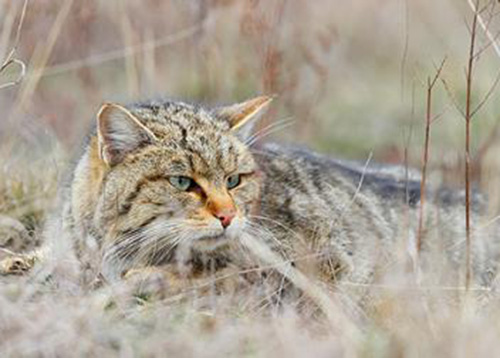
AsianScientist (Feb. 5, 2016) – Researchers have succeeded in identifying the species of cat found in agricultural settlements in China dating from around 3,500 BC. Their findings solve the question of whether cats were brought to China from the Near East over 5,000 years ago, or were already domesticated in China around the birth of agriculture.
All the bones the team found belong to the leopard cat, Prionailurus bengalensis, a distant relation of the western wildcat, Felis silvestris lybica, from which all modern domestic cats are descended. The scientists have thus provided evidence that cats began to be domesticated in China earlier than 3,000 BC.
The work of the international team of scientists from the Centre National de la Recherche Scientifique (CNRS), the French Natural History Museum (MNHN), the University of Aberdeen, the Chinese Academy of Social Science and the Shaanxi Provincial Institute of Archaeology was published in PLOS ONE.
In 2001, researchers from the Chinese Academy of Sciences discovered cat bones in agricultural settlements in Shaanxi province in northern China dating from around 3,500 BC. To better understand when, why and how cats first appeared in China, the team had to first identify the species to which the bones belonged. Although there are no less than four different forms of small cat in China, F. silvestris had never been recorded there.
The research team performed a geometric morphometric analysis, which in the absence of ancient DNA is the only way of differentiating the bones of such small cats. These species may have very similar morphologies, whose differences are often imperceptible using conventional techniques.

They analyzed the mandibles of five cats from Shaanxi and Henan dating from between 3,500 to 2,900 BC. They eventually determined that the bones all belonged to the leopard cat, P. bengalensis. Still very widespread in Eastern Asia today, this wildcat, which is a distant relation to F. silvestris, is well-known for its propensity to frequent areas with a strong human presence.
Humans and cats first started to form a close relationship in the Near East from 9,000 to 7,000 BC following the birth of agriculture. Similarly, leopard cats were probably attracted into Chinese settlements by the proliferation of rodents who took advantage of grain stores.
The team’s conclusions show that what happened in the Near East and Egypt also took place in China following the birth of agriculture in the eighth millennium BC. Cat domestication was, at least in these three regions of the world, closely connected to the beginnings of agriculture.
The only difference is that in China it was P. bengalensis and not F. silvestris that started to form a relationship with humans. Nevertheless, domestic cats in China today are not descended from the leopard cat, but rather from the western wildcat. Therefore, the latter came to replace the leopard cat in Chinese settlements after the end of the Neolithic.
So, did F. silvestris arrive in China with the opening of the Silk Road, when the Roman and Han empires began to establish tenuous links between East and West? This is the next question that needs to be answered.
The article can be found at: Vigne et al. (2016) Earliest “Domestic” Cats in China Identified as Leopard Cat (Prionailurus bengalensis).
———
Source: Centre National de la Recherche Scientifique; Photo: KleinYan/Flickr/CC.
Disclaimer: This article does not necessarily reflect the views of AsianScientist or its staff.












